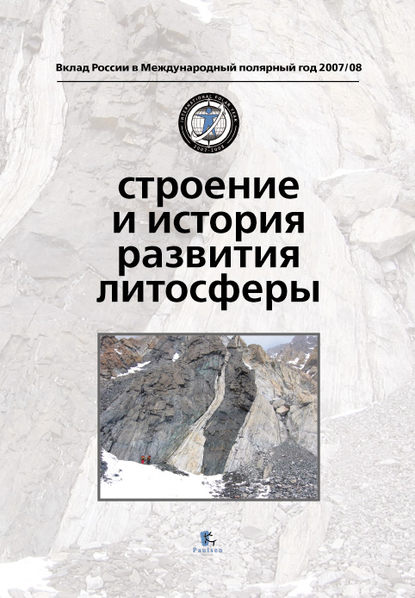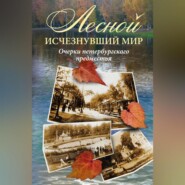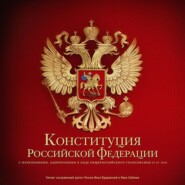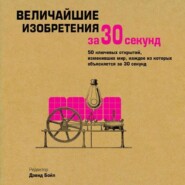По всем вопросам обращайтесь на: info@litportal.ru
(©) 2003-2024.
✖
Строение и история развития литосферы
Автор
Год написания книги
2010
Теги
Настройки чтения
Размер шрифта
Высота строк
Поля
Murdmaa I., Ivanova E., Duplessy J., Levitan M., Khusid T., Bourtman M., Alekhina G., Alekseeva T., Belousov M., Serova V. Facies system of the Eastern Barents Sea since the last glaciation to present // Marine Geology. 2006. V. 230. Pp. 275–303.
Olesen, O. G., Gellein J., Brekke H. et al. Magnetic anomaly map, Norway and adjacent ocean areas. Scale 3 million. Geological Survey of Norway. 1997.
Smith D.G., Harland W. B., Hughes N. F., Pickton C.A.G. The geology of Kong Karls Land, Svalbard // Geological Magazine. 1976. V. 113. №. 3. Pp. 193–304.
The Geology of Svalbard (ed. – W. B. Harland). Geological Society, London, Memoir No. 17. 1997. 521 p.
Vanneste M, Guidard S., Mienert J. Вottom simulating reflection and geothermal gradients across the western Svalbard Margin // Terra Nova. 2005. V. 17. Iss. 6. Pp. 510–516.
Vanneste M., Mienert J. B?nz S. The Hinlopen Slide: A giant, submarine slope failure on the northern Svalbard margin, Arctic Ocean // Earth and Planetary Science Letters. 2006. V. 245. Is. 1–2. Pp. 373–388
Winkelmann, D., Stein R., Triggering of the Hinlopen/Yermak Megaslide in relation to paleoceanography and climate history of the continental margin north of Spitsbergen // Geochem. Geophys. Geosyst. (G3). 2007. V. 8. № 6. Pp. 1–15. (An electronic journal of the earth sciences doi:10.1029/2006GC001485).
A. V. Zayonchek[81 - Geological Institute of Russian Academy of Science (GIN RAS), Moscow, Russia], H. Brekke[82 - Norwegian Petroleum Directorate (NPD), Stavanger, Norway], S. Yu. Sokolov[83 - Geological Institute of Russian Academy of Science (GIN RAS), Moscow, Russia], A.O. Mazarovich[84 - Geological Institute of Russian Academy of Science (GIN RAS), Moscow, Russia], K.O. Dobrolyubova[85 - Geological Institute of Russian Academy of Science (GIN RAS), Moscow, Russia], V. N. Efimov[86 - Geological Institute of Russian Academy of Science (GIN RAS), Moscow, Russia], A. S. Abramova[87 - Geological Institute of Russian Academy of Science (GIN RAS), Moscow, Russia], Yu. A. Zaraiskaya[88 - Geological Institute of Russian Academy of Science (GIN RAS), Moscow, Russia], A.V. Kokhan[89 - Geological Institute of Russian Academy of Science (GIN RAS), Moscow, Russia], E. A. Moroz[90 - Geological Institute of Russian Academy of Science (GIN RAS), Moscow, Russia], A. A. Peive[91 - Geological Institute of Russian Academy of Science (GIN RAS), Moscow, Russia], N.P. Chamov[92 - Geological Institute of Russian Academy of Science (GIN RAS), Moscow, Russia], K. P. Yampol’skii[93 - Geological Institute of Russian Academy of Science (GIN RAS), Moscow, Russia]. The Structure of Continent-Ocean transition zone at North-West Barents Sea Margin (results of 24–26-th cruises of RV «Akademik Nikolaj Strakhov», 2006–2009)
Abstract
Three geological-geophysical expeditions on R/V «Akademik Nikolaj Strakhov» in 2006–2009 (Geological Institute RAS, Norwegian Petroleum Directorate) resulted in detailed mapping by acoustic methods for significant areas of Knipovich ridge, southern slope of Mohn ridge, Storfjord and Orli troughs, continental slope and Franz-Joseph Land vicinity with total survey length about 22 000 km. Were discovered: northward zone of Svalbard shelf plate destruction, outcrops of dyke complexes and other volcanogeneous edifices on the shelf, gas hydrates release occurrences, modern tectonic displacements on continental slope and in sedimentary cover of Knipovich and Mohn ridges boards and many other facts. North-West margin of Barents sea shelf exposes the similarity with rift onshore structures at Northern areas of Spitzbergen Island, that could show the uniform conditions of their formation, and with the consideration of the data from neighbors areas at deep ocean gives the basis for development of model, connecting the geodynamic processes at continental and oceanic lithosphere.
Ю.Г. Леонов[94 - Геологический институт РАН, Москва, Россия], М.Д. Хуторской[95 - Геологический институт РАН, Москва, Россия]
Желоб Орла (Стурё) – элемент новейшей геодинамики внешней зоны Баренцевоморского шельфа
Аннотация
Приводятся результаты измерения теплового потока в северной части Свальбардской плиты вблизи архипелагов Земля Франца-Иосифа и Шпицберген и геодинамическая интерпретация полученных данных. Измерения выполнялись с помощью новой модификации геотермического зонда «ГЕОС-М». Получено 7 измерений на полигоне «ЗФИ» и 20 – на полигоне «Шпицберген». На первом из полигонов вариации теплового потока от 30 до 85 мВт/м
связаны как с тектонической активизацией трога Франц-Виктория, так, возможно, и со структурно-теплофизическими неоднородностями в разрезе осадочного чехла. Аномальные значения теплового потока (от 120 до 519 мВт/м
), измеренные в троге Орла (Стурё) (восточнее Северо-Восточной Земли архипелага Шпицберген), в сочетании с другими геологическими данными, свидетельствуют о развитии здесь рифтовой зоны, вызывающей деструкцию континентальной коры в зоне взаимодействия континентальной и океанической литосферы. Исследования проводились при финансовой поддержке Норвежского нефтяного директората, Президиума РАН, Отделения наук о Земле РАН и РФФИ.
Olesen, O. G., Gellein J., Brekke H. et al. Magnetic anomaly map, Norway and adjacent ocean areas. Scale 3 million. Geological Survey of Norway. 1997.
Smith D.G., Harland W. B., Hughes N. F., Pickton C.A.G. The geology of Kong Karls Land, Svalbard // Geological Magazine. 1976. V. 113. №. 3. Pp. 193–304.
The Geology of Svalbard (ed. – W. B. Harland). Geological Society, London, Memoir No. 17. 1997. 521 p.
Vanneste M, Guidard S., Mienert J. Вottom simulating reflection and geothermal gradients across the western Svalbard Margin // Terra Nova. 2005. V. 17. Iss. 6. Pp. 510–516.
Vanneste M., Mienert J. B?nz S. The Hinlopen Slide: A giant, submarine slope failure on the northern Svalbard margin, Arctic Ocean // Earth and Planetary Science Letters. 2006. V. 245. Is. 1–2. Pp. 373–388
Winkelmann, D., Stein R., Triggering of the Hinlopen/Yermak Megaslide in relation to paleoceanography and climate history of the continental margin north of Spitsbergen // Geochem. Geophys. Geosyst. (G3). 2007. V. 8. № 6. Pp. 1–15. (An electronic journal of the earth sciences doi:10.1029/2006GC001485).
A. V. Zayonchek[81 - Geological Institute of Russian Academy of Science (GIN RAS), Moscow, Russia], H. Brekke[82 - Norwegian Petroleum Directorate (NPD), Stavanger, Norway], S. Yu. Sokolov[83 - Geological Institute of Russian Academy of Science (GIN RAS), Moscow, Russia], A.O. Mazarovich[84 - Geological Institute of Russian Academy of Science (GIN RAS), Moscow, Russia], K.O. Dobrolyubova[85 - Geological Institute of Russian Academy of Science (GIN RAS), Moscow, Russia], V. N. Efimov[86 - Geological Institute of Russian Academy of Science (GIN RAS), Moscow, Russia], A. S. Abramova[87 - Geological Institute of Russian Academy of Science (GIN RAS), Moscow, Russia], Yu. A. Zaraiskaya[88 - Geological Institute of Russian Academy of Science (GIN RAS), Moscow, Russia], A.V. Kokhan[89 - Geological Institute of Russian Academy of Science (GIN RAS), Moscow, Russia], E. A. Moroz[90 - Geological Institute of Russian Academy of Science (GIN RAS), Moscow, Russia], A. A. Peive[91 - Geological Institute of Russian Academy of Science (GIN RAS), Moscow, Russia], N.P. Chamov[92 - Geological Institute of Russian Academy of Science (GIN RAS), Moscow, Russia], K. P. Yampol’skii[93 - Geological Institute of Russian Academy of Science (GIN RAS), Moscow, Russia]. The Structure of Continent-Ocean transition zone at North-West Barents Sea Margin (results of 24–26-th cruises of RV «Akademik Nikolaj Strakhov», 2006–2009)
Abstract
Three geological-geophysical expeditions on R/V «Akademik Nikolaj Strakhov» in 2006–2009 (Geological Institute RAS, Norwegian Petroleum Directorate) resulted in detailed mapping by acoustic methods for significant areas of Knipovich ridge, southern slope of Mohn ridge, Storfjord and Orli troughs, continental slope and Franz-Joseph Land vicinity with total survey length about 22 000 km. Were discovered: northward zone of Svalbard shelf plate destruction, outcrops of dyke complexes and other volcanogeneous edifices on the shelf, gas hydrates release occurrences, modern tectonic displacements on continental slope and in sedimentary cover of Knipovich and Mohn ridges boards and many other facts. North-West margin of Barents sea shelf exposes the similarity with rift onshore structures at Northern areas of Spitzbergen Island, that could show the uniform conditions of their formation, and with the consideration of the data from neighbors areas at deep ocean gives the basis for development of model, connecting the geodynamic processes at continental and oceanic lithosphere.
Ю.Г. Леонов[94 - Геологический институт РАН, Москва, Россия], М.Д. Хуторской[95 - Геологический институт РАН, Москва, Россия]
Желоб Орла (Стурё) – элемент новейшей геодинамики внешней зоны Баренцевоморского шельфа
Аннотация
Приводятся результаты измерения теплового потока в северной части Свальбардской плиты вблизи архипелагов Земля Франца-Иосифа и Шпицберген и геодинамическая интерпретация полученных данных. Измерения выполнялись с помощью новой модификации геотермического зонда «ГЕОС-М». Получено 7 измерений на полигоне «ЗФИ» и 20 – на полигоне «Шпицберген». На первом из полигонов вариации теплового потока от 30 до 85 мВт/м
связаны как с тектонической активизацией трога Франц-Виктория, так, возможно, и со структурно-теплофизическими неоднородностями в разрезе осадочного чехла. Аномальные значения теплового потока (от 120 до 519 мВт/м
), измеренные в троге Орла (Стурё) (восточнее Северо-Восточной Земли архипелага Шпицберген), в сочетании с другими геологическими данными, свидетельствуют о развитии здесь рифтовой зоны, вызывающей деструкцию континентальной коры в зоне взаимодействия континентальной и океанической литосферы. Исследования проводились при финансовой поддержке Норвежского нефтяного директората, Президиума РАН, Отделения наук о Земле РАН и РФФИ.

















